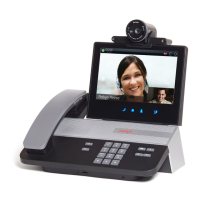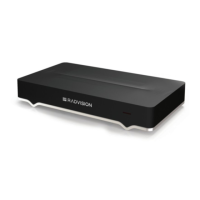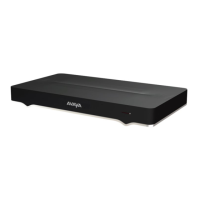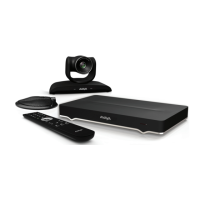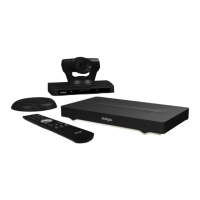Do you have a question about the Avaya PARTNER ACS and is the answer not in the manual?
Describes the content and organization of the manual's chapters and appendices.
Lists system capabilities available with different software releases.
Explains the Key and Hybrid modes of system operation.
Details the maximum number of lines and extensions based on system release and configuration.
Describes the hardware modules, telephones, and carriers used in the system.
Specifies environmental and electrical requirements for system installation.
Provides step-by-step instructions for wall-mounting the control unit.
Details procedures for connecting outside lines and telephones to the system.
Covers assembling, connecting, and testing system telephones.
Explains fundamental concepts of system and telephone programming.
Procedures for setting the system clock and daylight saving time.
Covers programming line assignments for extensions and pools.
Details features for tailoring extension functionality and behavior.
Introduces system options programming and feature listing.
Procedures for backing up and restoring system programming.
Features for restricting and allowing specific call types and numbers.
Organizing extensions into groups for call handling.
Managing line pools in Hybrid mode for call routing.
Introduction to programming features for individual telephones.
Essential programming features for all telephones.
Controls the order of line or pool selection when making calls.
Assigns custom names to extensions for caller identification.
Details on PARTNER system telephones, buttons, and indicators.
Information on connecting and using single-line telephones.
Procedures for making, answering, holding, conferencing, and transferring calls.
Introduction to features used by the system operator.
Setup for operator extensions including call handling and button programming.
Features for automating call answering during peak periods.
Enables callers to dial extensions directly without operator assistance.
Programs a button to turn Night Service on and off for extensions.
Introduction to telephone features programmed by users and administrators.
Entering account codes for tracking calls.
Feature for one-touch dialing of numbers, extensions, or feature codes.
Redirects calls to another extension after a specified number of rings.
Forwards calls from one extension to another.
Features related to Caller ID service for display telephones.
Accesses ringing, held, or in-progress calls on specific lines.
Prevents incoming calls from ringing at the extension.
Locks and unlocks the extension to prevent unauthorized use.
Features for quick dialing of frequently used numbers.
Introduction to connecting and programming various auxiliary devices.
Using answering machines for call coverage and message retrieval.
Automated call routing based on caller input.
Setup and usage instructions for fax machines and fax management.
Using modems for sending calls only or send/receive calls.
Connecting an audio source for music played during call holds.
Features for call reporting and tracking telephone usage.
Information on compatible voice messaging systems and their programming.
Information on upgrading system software and hardware.
Procedure for replacing the processor module's backup batteries.
Steps for upgrading system software and module firmware using PC cards.
Instructions for installing new hardware modules into the carrier.
Procedures for replacing existing modules in the system.
Introduction to common system problems and their solutions.
Guidance on obtaining support and necessary information for calls.
Troubleshooting common issues with system telephones.
Troubleshooting common issues with single-line telephones.
Troubleshooting issues related to the 1600 DSL module's functionality.
Troubleshooting common error messages during automatic backups.
Troubleshooting issues encountered during manual backup procedures.
Troubleshooting common error messages during system restore.
Addresses general system operational issues and their solutions.
Describes the content and organization of the manual's chapters and appendices.
Lists system capabilities available with different software releases.
Explains the Key and Hybrid modes of system operation.
Details the maximum number of lines and extensions based on system release and configuration.
Describes the hardware modules, telephones, and carriers used in the system.
Specifies environmental and electrical requirements for system installation.
Provides step-by-step instructions for wall-mounting the control unit.
Details procedures for connecting outside lines and telephones to the system.
Covers assembling, connecting, and testing system telephones.
Explains fundamental concepts of system and telephone programming.
Procedures for setting the system clock and daylight saving time.
Covers programming line assignments for extensions and pools.
Details features for tailoring extension functionality and behavior.
Introduces system options programming and feature listing.
Procedures for backing up and restoring system programming.
Features for restricting and allowing specific call types and numbers.
Organizing extensions into groups for call handling.
Managing line pools in Hybrid mode for call routing.
Introduction to programming features for individual telephones.
Essential programming features for all telephones.
Controls the order of line or pool selection when making calls.
Assigns custom names to extensions for caller identification.
Details on PARTNER system telephones, buttons, and indicators.
Information on connecting and using single-line telephones.
Procedures for making, answering, holding, conferencing, and transferring calls.
Introduction to features used by the system operator.
Setup for operator extensions including call handling and button programming.
Features for automating call answering during peak periods.
Enables callers to dial extensions directly without operator assistance.
Programs a button to turn Night Service on and off for extensions.
Introduction to telephone features programmed by users and administrators.
Entering account codes for tracking calls.
Feature for one-touch dialing of numbers, extensions, or feature codes.
Redirects calls to another extension after a specified number of rings.
Forwards calls from one extension to another.
Features related to Caller ID service for display telephones.
Accesses ringing, held, or in-progress calls on specific lines.
Prevents incoming calls from ringing at the extension.
Locks and unlocks the extension to prevent unauthorized use.
Features for quick dialing of frequently used numbers.
Introduction to connecting and programming various auxiliary devices.
Using answering machines for call coverage and message retrieval.
Automated call routing based on caller input.
Setup and usage instructions for fax machines and fax management.
Using modems for sending calls only or send/receive calls.
Connecting an audio source for music played during call holds.
Features for call reporting and tracking telephone usage.
Information on compatible voice messaging systems and their programming.
Information on upgrading system software and hardware.
Procedure for replacing the processor module's backup batteries.
Steps for upgrading system software and module firmware using PC cards.
Instructions for installing new hardware modules into the carrier.
Procedures for replacing existing modules in the system.
Introduction to common system problems and their solutions.
Guidance on obtaining support and necessary information for calls.
Troubleshooting common issues with system telephones.
Troubleshooting common issues with single-line telephones.
Troubleshooting issues related to the 1600 DSL module's functionality.
Troubleshooting common error messages during automatic backups.
Troubleshooting issues encountered during manual backup procedures.
Troubleshooting common error messages during system restore.
Addresses general system operational issues and their solutions.
| Brand | Avaya |
|---|---|
| Model | PARTNER ACS |
| Category | Conference System |
| Language | English |


